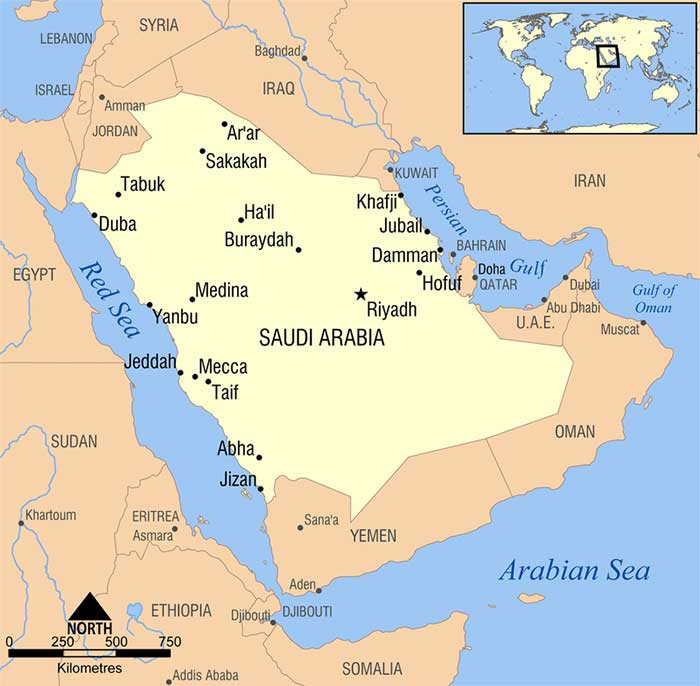On April 11, Houthi rebels in Yemen fired a ballistic missile at Saudi Arabia’s capital, Riyadh.
Yes, you read that correctly. There is a shooting war involving ballistic missiles going on in Saudi Arabia.
Over the last couple of weeks, we discussed two reasons for the rising oil price. Back on March 16, we reviewed the problems with Venezuela. Then on April 20, we looked at how the U.S. could back out of the Iran nuclear deal and send oil prices ripping higher.
However, there is another source of anxiety in the oil market … this war between Saudi Arabia and its next-door neighbor, Yemen.
The World’s Largest Oil Producer
The map below shows just how close the two countries are:

This isn’t a new war. Saudi/Yemeni tensions go way back. Much of this tension reaches all the way back during the formation of Saudi Arabia, back in the mid-1920s. That tension exploded into full-blown war in 1934.
The most recent conflict began in May 2015. It’s still going on. That’s important for a couple of reasons.
First, because Saudi Arabia produces about 9.9 million barrels of oil per day. Any disruption of that oil will send the oil market into a screaming fit. Oil prices would rocket higher.
A ballistic missile attack on Riyadh is a serious threat to the safety of the world’s largest oil producer.
Second, an enormous amount of oil flows through the Bab el-Mandeb Strait from the Arabian Sea into the Red Sea. That traffic squeezes into the narrow gap between Yemen and Djibouti.
The strait is so narrow that ships have just a 2-mile channel. In 2016, roughly 4.8 million barrels of oil per day transited this region.
According to the Energy Information Administration, it’s one of the three important oil trade chokepoints around the Arabian Peninsula.
Any disruptions in that tiny body of water will affect the oil price and push it higher.
The Bottom Line
Fear drives the oil price right now. The supply and demand fundamentals tightened up recently. The market priced in bad news, which pushed the price of Brent Crude, the European benchmark price, up to its highest price since 2014.
As we’ve discussed before, you must have exposure to oil right now.
The easiest way to do that is through the Energy Select Sector SPDR ETF (NYSE: XLE). It’s up 11% since I first recommended it in March. More gains are coming.
Good investing,

Matt Badiali
Editor, Real Wealth Strategist




